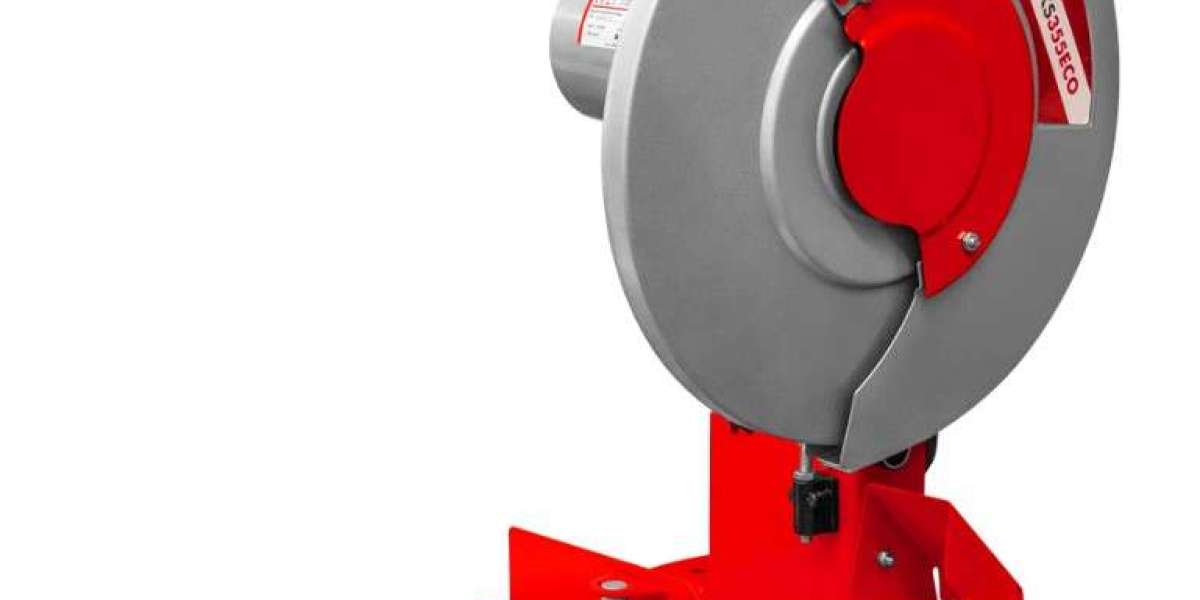Cutting Machinery: Precision Tools Powering Modern Manufacturing
In the world of manufacturing and industrial production, cutting machinery plays a foundational role. From shaping metals and plastics to slicing fabrics and composites, cutting machines are vital in transforming raw materials into finished products with speed, accuracy, and consistency. As industries demand higher efficiency and tighter tolerances, cutting machinery has evolved into a sophisticated category encompassing a wide range of tools and technologies.
Whether you're in construction, automotive, aerospace, textiles, packaging, or metalworking, understanding cutting machinery and its capabilities is essential to staying competitive and innovative.
What Is Cutting Machinery?
Cutting machinery refers to mechanical devices or systems designed to cut, shape, or divide materials into specific forms and dimensions. These machines use various physical processes—mechanical, thermal, or chemical—to separate or contour materials like metal, wood, plastic, glass, stone, or fabric.
The choice of cutting method depends on the material, precision requirements, volume, and the final application.
Types of Cutting Machinery
There are many types of cutting machines, each suited to different materials and purposes. Here are the most common categories:
1. Mechanical Cutting Machines
Shearing machines: Used to cut sheet metal with straight blades.
Saws (circular, band, hacksaws): Common in wood and metal cutting.
Lathes and milling machines: Used in precision metal cutting and shaping.
Guillotines: Often used in the paper and textile industries for straight-edge cuts.
2. Thermal Cutting Machines
Laser cutting machines: Use a focused laser beam to melt, burn, or vaporize materials. Ideal for intricate, high-precision jobs in metal, plastics, and more.
Plasma cutting machines: Use high-velocity ionized gas to cut electrically conductive materials like steel and aluminum.
Oxy-fuel cutting machines: Use oxygen and fuel gases to cut thick metal, particularly steel.
3. Waterjet Cutting Machines
Use high-pressure water (often mixed with abrasives) to cut through materials like metal, stone, glass, and ceramics without generating heat. Perfect for materials sensitive to heat deformation.
4. CNC Cutting Machines
Computer Numerical Control (CNC) machines automate cutting processes based on programmed instructions. CNC technology can be integrated into laser, plasma, milling, and router machines, offering precision and repeatability at scale.
5. Ultrasonic and Electrical Discharge Machines (EDM)
Used for specialized applications where traditional cutting tools can’t be applied, such as extremely hard or delicate materials.
Applications Across Industries
Cutting machinery is used in nearly every manufacturing sector, including:
Automotive: Cutting chassis components, body panels, and interior materials.
Aerospace: Precision cutting of composites and metals for lightweight and durable parts.
Construction: Fabricating steel beams, tiles, insulation, and wood structures.
Textile and Apparel: Cutting fabrics, patterns, and materials for clothing and upholstery.
Packaging: Cutting cardboard, plastics, and foam for customized packaging solutions.
Electronics: Cutting circuit boards, enclosures, and insulating materials.
Benefits of Modern Cutting Machinery
1. Precision and Accuracy
Modern cutting machines—especially those using CNC or laser technology—can produce extremely precise cuts with tight tolerances, which is essential for industries like aerospace and medical device manufacturing.
2. Efficiency and Speed
Automated cutting significantly reduces production time compared to manual methods, allowing for high-volume production and quicker turnaround.
3. Versatility
Cutting machinery can handle a wide range of materials and shapes, from sheet metal and tubing to intricate designs on wood or fabric.
4. Waste Reduction
Advanced cutting methods like nesting in CNC systems optimize material usage, reducing scrap and saving costs.
5. Enhanced Safety
Enclosed or automated machines minimize human exposure to blades, heat, or sharp materials, improving workplace safety.
Key Considerations When Choosing Cutting Machinery
Material Type: Choose a machine compatible with your specific material (metal, fabric, plastic, etc.).
Cutting Volume: For high-volume operations, automated or CNC machines are more cost-effective.
Precision Needs: Industries requiring tight tolerances may benefit from laser or waterjet machines.
Budget: Upfront costs vary; mechanical machines may be cheaper, but automation offers better ROI over time.
Maintenance and Operation: Some machines require specialized operators and regular servicing.
Automation and Industry 4.0
The integration of Industry 4.0 principles—automation, data exchange, and smart technology—has transformed cutting machinery. New features include:
IoT-enabled machines that track performance and predict maintenance needs
Real-time monitoring of cutting speed, temperature, and alignment
Cloud-based software for remote operation and diagnostics
AI and machine learning for improved nesting, error detection, and process optimization
These innovations result in greater productivity, lower downtime, and enhanced adaptability for modern manufacturers.
Environmental Impact and Sustainability
Many manufacturers are shifting toward more sustainable cutting processes. Waterjet cutting, for example, doesn't produce hazardous fumes or heat-affected zones. Similarly, laser cutting with energy-efficient fiber lasers consumes less power.
Modern machines also support material optimization software that reduces waste and carbon footprint during the production cycle.
The Future of Cutting Machinery
The future of cutting technology is marked by further automation, smarter sensors, and increased adoption of robotic arms and cobots (collaborative robots) that work alongside human operators. Expect to see continued advances in:
Multi-material cutting systems
AI-driven adaptive cutting
Hybrid machines combining laser, milling, and 3D printing capabilities
As the demand for mass customization grows, flexible and intelligent cutting machinery will be essential for agile production.
Conclusion
Cutting machinery is the backbone of modern manufacturing. From simple shears to advanced CNC lasers, these machines empower industries to shape raw materials into the precision components that build our world. As technology advances, cutting equipment is becoming smarter, faster, and more efficient—paving the way for innovative design, leaner production, and higher-quality outcomes.
Whether you're a small workshop or a global manufacturer, investing in the right cutting machinery can transform your production process and sharpen your competitive edge.













